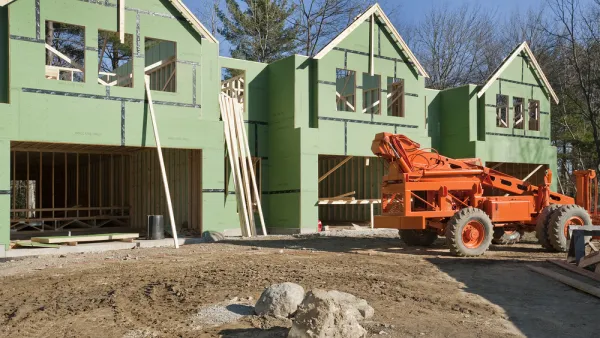As part of a series of editorials outlining the priorities President Obama should tackle in his second term, The New York Times looks at how the federal government could help support the increasing number of American's in need of housing assistance.
With "nearly nine million households teetering on the verge of homelessness," and recent congressional cutbacks to the nation's key federal programs for providing affordable housing, "[t]he administration obviously needs to do better" to relieve the country's crisis in affordable housing. Public housing needs have "grown significantly" during the recession. "Last year, for example, 8.5 million very-low-income families without housing assistance paid more than half their incomes for housing — an increase of 43 percent from 2007. These families skimp on food and medical care to make the rent and tend to move often, making it difficult for their children to be successful at school. They are also more prone to homelessness, which is traumatic for them and extremely costly for the municipalities that run shelters."
Yet the deepening crisis has flown beneath the administration radar thus far. "President Obama’s budget for the 2013 fiscal year is not much of an improvement; given inflation, Congress would have to increase appropriations just to keep treading water, when, in fact, what the poor in this country need is a significant jump."
The Times editors make note of several policy changes that could help bolster the main federal programs design to help low-income families find housing - "traditional public housing, for which the government provides operating expenses, plus two different programs under Section 8 of the housing law, in which rents are subsidized in privately owned properties."
FULL STORY: The Affordable Housing Crisis

National Parks Layoffs Will Cause Communities to Lose Billions
Thousands of essential park workers were laid off this week, just before the busy spring break season.

Retro-silient?: America’s First “Eco-burb,” The Woodlands Turns 50
A master-planned community north of Houston offers lessons on green infrastructure and resilient design, but falls short of its founder’s lofty affordability and walkability goals.

Delivering for America Plan Will Downgrade Mail Service in at Least 49.5 Percent of Zip Codes
Republican and Democrat lawmakers criticize the plan for its disproportionate negative impact on rural communities.

Test News Post 1
This is a summary

Test News Headline 46
Test for the image on the front page.

Balancing Bombs and Butterflies: How the National Guard Protects a Rare Species
The National Guard at Fort Indiantown Gap uses GIS technology and land management strategies to balance military training with conservation efforts, ensuring the survival of the rare eastern regal fritillary butterfly.
Urban Design for Planners 1: Software Tools
This six-course series explores essential urban design concepts using open source software and equips planners with the tools they need to participate fully in the urban design process.
Planning for Universal Design
Learn the tools for implementing Universal Design in planning regulations.
EMC Planning Group, Inc.
Planetizen
Planetizen
Mpact (formerly Rail~Volution)
Great Falls Development Authority, Inc.
HUDs Office of Policy Development and Research
NYU Wagner Graduate School of Public Service





























